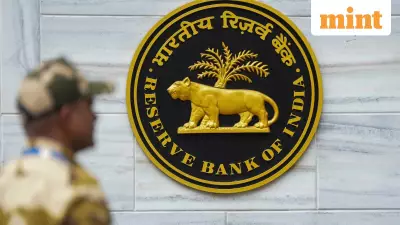
India's retail inflation has plummeted to a multi-year low, providing significant relief to consumers and policymakers alike. The Consumer Price Index (CPI) recorded a remarkable decline to 0.25 percent in October 2023, marking one of the lowest inflation readings in recent memory.
Breaking Down the Inflation Numbers
According to data released by the National Statistical Office (NSO), the inflation rate for October 2023 stood at 0.25 percent, a dramatic drop from September's 1.47 percent. This represents the lowest inflation reading since the current series began in January 2012. The previous record low was 0.86 percent recorded in November 2020 during the pandemic period.
The food basket, which carries substantial weight in the inflation calculation, showed particularly encouraging trends. Food inflation turned negative at -0.11 percent in October, compared to 1.54 percent in the previous month. This deflation in food prices was primarily driven by significant corrections in vegetable prices, which recorded a substantial decline.
Key Factors Behind the Decline
Several factors contributed to this sharp decline in retail inflation. The most prominent was the sharp correction in vegetable prices, particularly tomatoes, onions, and potatoes. These essential kitchen items had experienced significant price surges in previous months but have now normalized due to improved supply conditions and seasonal factors.
Other food categories also showed positive trends. Cereal prices moderated, while pulses and spices continued to show elevated inflation. The fuel and light segment remained in deflationary territory, providing additional relief to household budgets.
Core Inflation and Policy Implications
Despite the overall positive headline numbers, core inflation remains elevated at around 4.3 percent. Core inflation excludes volatile food and fuel components and provides a clearer picture of underlying price pressures. This persistent core inflation suggests that service costs and manufactured goods continue to face pricing pressures.
The Reserve Bank of India (RBI) closely monitors these inflation trends while formulating monetary policy. The central bank has maintained its inflation target of 4 percent with a tolerance band of 2-6 percent. The latest inflation reading of 0.25 percent falls well below the lower end of this tolerance band, potentially giving the RBI more flexibility in its policy decisions.
Economic Outlook and Future Projections
Economists and market analysts are viewing this development as positive for the Indian economy. Lower inflation boosts consumer purchasing power and could potentially support economic growth. However, most experts expect this low inflation reading to be temporary, with prices likely to normalize in the coming months.
The government's proactive measures in managing food supplies and the arrival of fresh winter crops are expected to keep food inflation in check. Nevertheless, global factors such as crude oil prices and geopolitical developments continue to pose risks to the inflation outlook.
Looking ahead, the inflation trajectory will be crucial for determining the RBI's monetary policy stance in the upcoming bi-monthly meetings. While the current low inflation provides comfort, the central bank is likely to remain vigilant about potential price pressures rebuilding in the economy.





